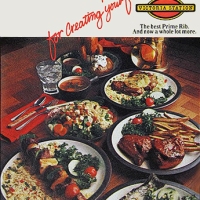To some degree, a discussion of the Ku Klux Klan’s relationship to restaurants in the early 1920s follows a familiar path that includes KKK members as restaurant owners and patrons. Not such a big deal.
But then there’s how the KKK influenced restaurants — a more disturbing topic, particularly when it gets into threatening restaurant owners, running them out of town, and destroying their businesses.
In the 1920s, the resurgent Klan had a number of targets, not only Blacks, but also Catholics, Jews, and immigrants. Greek restaurant operators were often singled out. In Goldsboro NC two Greek restaurant operators were chased out of town because they served Black customers, and a similar fate befell a restaurant keeper in Pensacola FL. In that case three carloads of men dressed in long robes and hoods came into the restaurant one night, handing the restaurant man a letter advising him to leave town right away, which he did. A police captain in the restaurant at the time made no effort to arrest them for wearing masks in public, excusing his inaction by saying he thought they were members of a “Greek-letter fraternity.” In St. Louis MO a Greek restaurant operator was threatened with violence if he and his friends — called “low-class immigrants” — did not leave the country.
In Jonesboro AR the Klan called a boycott of businesses owned by Catholics and Jews, which included mills, stores, and restaurants. Anticipating a similar action in Little Rock, many businesses suddenly posted signs advertising they were “100 per cent” or “strictly” American. After a patron left, an “all-American” restaurant owner might have found a card had been left behind similar to the one shown here.
The presence of the KKK in an area, as well as a generally heightened level of intolerance throughout the country, inspired imitators. It was apparently a non-Klan group in Chester PA, who entered a Greek-run restaurant and chased out the customers. Then they formed a circle in the middle of the restaurant, launching their attack upon a signal from the leader. They smashed furniture and crockery and threw a large coffee urn at a worker, resulting in damage running into the thousands of dollars.
The Klan was only one of a number of pre-WWII terrorist groups focused on defending the rights of native-born whites and asserting social and economic control through force. Also, there were irregular mobs that rose up spontaneously in response to perceived assaults on their values and interests. Race riots took place in numerous cities and towns in the early 20th century and especially after WWI. Restaurants were often smashed and burned.
For example, a restaurant owned by Harry Loper in Springfield IL did not survive a race riot in 1908 in which many homes occupied by Blacks were burned. Loper was white, native born, an Elk, and a major in the National Guard. His offense? He loaned his car, one of only two in town, to authorities to spirit two Black prisoners in the city’s jail to safety under threat of lynching. His car was set on fire, and white rioters broke out the restaurant’s windows and smashed the interior furnishings. (see photo at top)
 In Muncie IN, a crusading newspaper editor took pains to document all local KKK activity and name the businessmen, police, and other ostensibly respectable citizens who were members. He printed the letter (see above) delivered one night by two black-robed Klansmen on horses warning a white woman not to serve Blacks. He also noted that a number of Klansmen ran restaurants, among them the Blue Bird Inn and another “100% place.” He gloated as they and others failed, concluding that “klucking as business does not pay.”
In Muncie IN, a crusading newspaper editor took pains to document all local KKK activity and name the businessmen, police, and other ostensibly respectable citizens who were members. He printed the letter (see above) delivered one night by two black-robed Klansmen on horses warning a white woman not to serve Blacks. He also noted that a number of Klansmen ran restaurants, among them the Blue Bird Inn and another “100% place.” He gloated as they and others failed, concluding that “klucking as business does not pay.”
As for Black-owned restaurants, who knows how many of them went out of business or relocated following mob attacks. There is no comprehensive record, but there are examples. Atlanta had a large number of Black-operated lunchrooms in 1907, the year of its race riot. Charles W. Mosley, a restaurant owner in Atlanta at the time of the riot, moved his business to Richmond VA a few months later, where he expanded into a hotel, café, and entertainment center with movies, roller skating, and vaudeville performances. During Tulsa’s white-led race riot of 1921, the entire Black Greenwood business district and most residences were destroyed by white rioters, including several dozen eating places.
After looking at the effect of the KKK and their ilk, it seems to me that even after they faded in the late 1920s, they left behind a legacy for decades evident in restaurants that adopted names such as the ever-popular Kozy Korner Kafe and the like.
© Jan Whitaker, 2017
















 It's great to hear from readers and I take time to answer queries. I can't always find what you are looking for, but I do appreciate getting thank yous no matter what the outcome.
It's great to hear from readers and I take time to answer queries. I can't always find what you are looking for, but I do appreciate getting thank yous no matter what the outcome.


